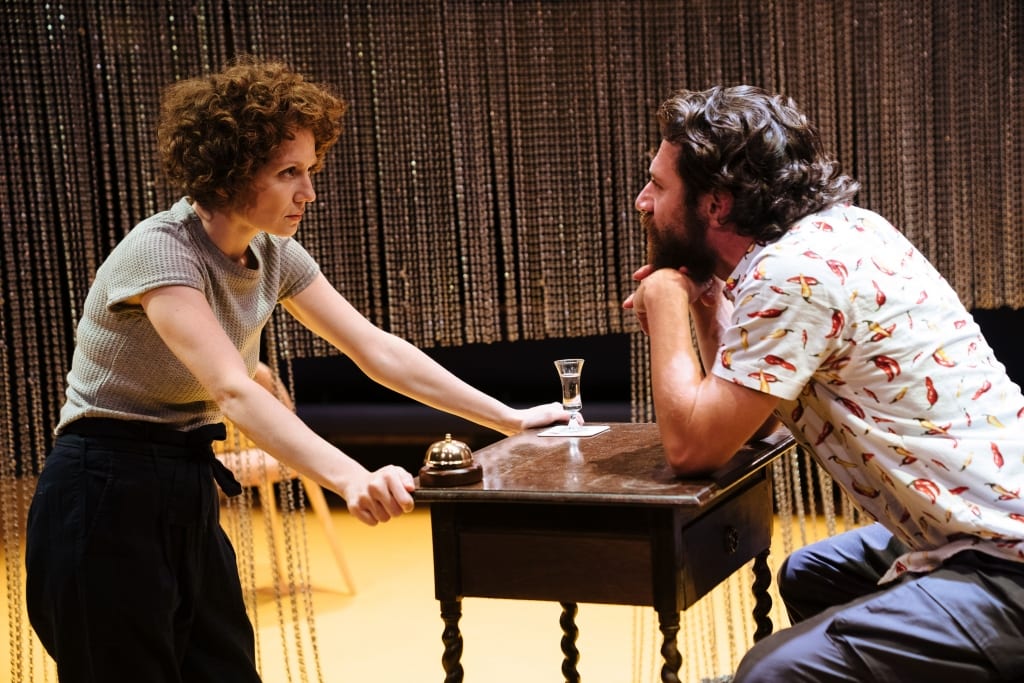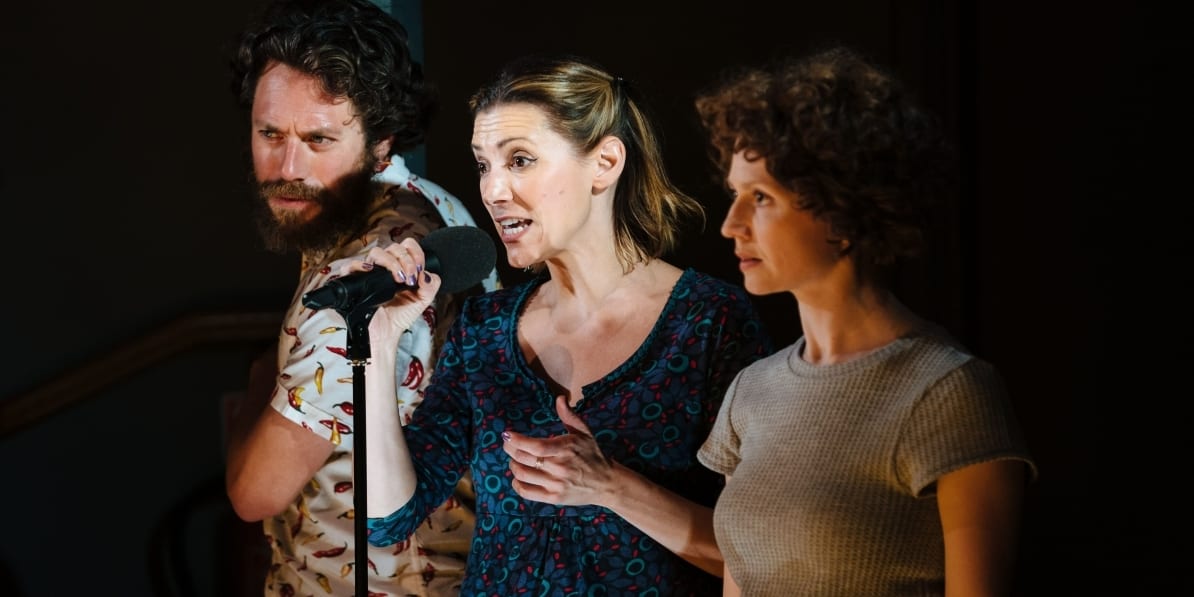This new play is a joint production between the Orange Tree Theatre and the Actors Touring Company. It is also Matthew Xia’s first production as artistic director of the latter company. There is a lot of talent in both the creative and acting team and this combines to generate some real positives local to individual contributions. The staging has an energetic invention about it that will be familiar to those who saw Fugard’s ‘Blood Knot’, Matthew Xia’s last production at this venue. But unfortunately the technical and expressive skills of the performers are continually undermined and negated by a text that is both tiresome in its mannerisms, randomly whimsical, and unstable in characterisation.
The four actors begin in a pattern of improvisation throwing lines and thoughts and ideas back and forth to one another. This has energy and promise. But instead of settling into a firm narrative evolving out of these experiments it continues in this vein for the duration of the play with the actors assuming fragments and facets of the various characters but no stable affinities. Moreover, each time the writer introduces a foreign, usually Dutch, phrase, a bell is pinged and the actor goes to the microphone to offer a translation (matching the footnote in the printed text). This not only delays the action but becomes an increasingly irritating tic as the evening progresses.
After the event it is possible to see through the distancing devices and meta-theatrical gestures and assemble what could be a powerful story except for the fact that the writer undermines the coherence of the material through the technique adopted. A heavily-pregnant Israeli violinist, living in an elegant apartment in the canal ring of Amsterdam suddenly finds a gas bill from the war years pushed under her door. The play pursues the implications of this action and the grim trope at the heart of it as the violinist pursues the course of her day. Just as in Virginia Woof’s ‘Mrs Dalloway’ there is an emerging dialogue between the events of the past the present. We gradually learn more of the violinist’s hinterland and the identity, family life and story of the woman who had inhabited this building in World War Two.
There are some very important themes here on identity and belonging and definitions of who is inside and outside the community and how that happens. There are also important historical themes in play, notably the extent of collaboration alongside resistance that took place within the occupied Netherlands. The author is surely correct that after so many plays about the Holocaust its themes are nowadays best treated obliquely and approached by indirect routes. Yet these serious issues rarely come to life dramatically in a sustained fashion. The one exception is a fine scene set in a supermarket when for a moment Brechtian techniques are put to one side: the violinist imagines with increasing fearfulness what the other people in the queue are thinking about her, and suddenly the wartime themes and present-day concerns about what it is to be defined and imaginatively nullified by other people come together in sharp and telling focus. But elsewhere one is not made to care enough about character or situation to engage beyond a certain level of technical admiration.

Where so much material is randomly introduced, much depends on how well the actors put it across through their own body language and expressive detail. Here the production is hard to fault with all four players acting with brio and energy: they are clearly enjoying themselves and the challenges they are given. All credit as well to designer Naomi Kuyck-Cohen who conjures up a sense of an Amsterdam canal house, its elegance and its potential confinement, with minimal but evocative means. Particularly striking is a chain-mail curtain with rectangles in it that gradually rises in the course of the later part of the action to reveal cubby-holes, windows and doors. Also the full-fat yellow floor conveyed just the right mixture of sun-burst energy and sickly aftertaste to mirror the moods and events attributable to the players.
The Orange Tree is a very specific space, both intimate and exposed, where there is a need for the action to seem compelling from all angles. Both director and movement director ensured that there was something dynamic happening from every vantage point and the action was never becalmed. Unfortunately this did not fully compensate for the self-fragmenting effect of the writing.
This theatre does sterling work in both discovering plays of yesteryear that have unaccountably fallen from view and in promoting new writing. This production was unfortunately not one of their most memorable despite the determined efforts and diverse talents of all involved. There was a lot to talk about afterwards though, given the importance of the themes addressed, and the larger questions of how one should approach Holocaust themes at this present point in time.

